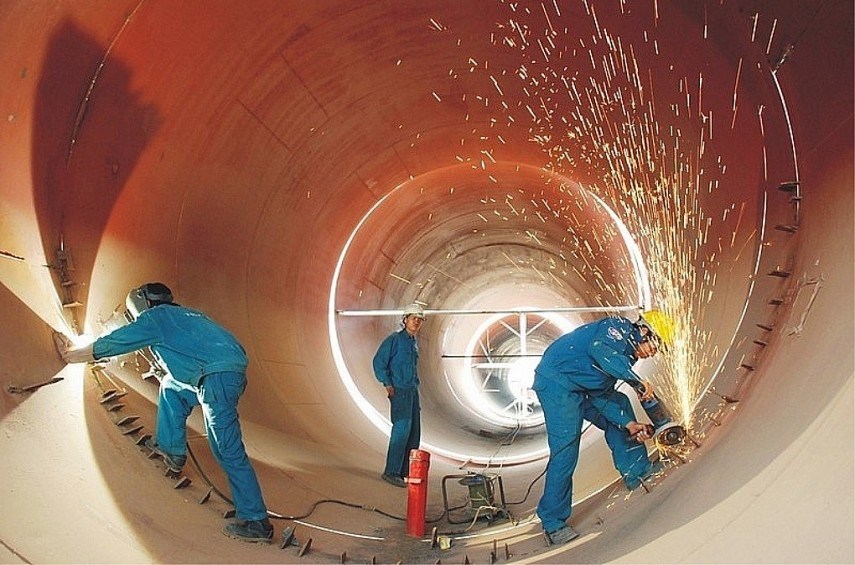Green production challenges steel industry
As the steel industry is one of the major contributors to Vietnam’s carbon emissions, accounting for about 17 percent of the country’s total, energy transition and technological transformation is an urgent requirement for the industry towards green manufacturing.
Early energy transition needed
There are currently over 300 small- and medium-sized enterprises producing cast iron and steel, resulting in large amounts of CO2 emissions into the environment; especially, the amount of dust released is also high, up to millions of tonnes a year. For example, a survey conducted by the Energy Efficiency and Sustainable Development Department under the Ministry of Industry and Trade (MoIT) found that, to produce 10 million tonnes of steel, factories emit about 21 million tonnes of carbon dioxide (CO2) into the environment. The use of coke is the largest source of emissions in factories using Basic Oxygen Furnace (BOF) technology.
 Vietnam’s steel industry needs energy transition and digital transformation to realize its green production target
Vietnam’s steel industry needs energy transition and digital transformation to realize its green production target
According to statistics from the World Steel Association (WSA), the world's steel billet production is currently applying two leading technologies: blast furnace - blast oxygen furnace (BF-BOF), accounting for 70 percent, and electric arc furnace (EAF), accounting for 30 percent. Vietnam’s steel industry is applying three technologies to produce billet: BF-BOF technology (60 percent), EAF (30 percent), and IF induction furnace (10 percent).
In the carbon neutral trend, coal contributes to about 70 percent of global steel production. Therefore, CO2-free steel production requires vast amounts of green energy, and increasing green energy production requires enormous amounts of steel.
Chairman of the Vietnam Association of Casting and Metallurgy Science and Technology Chu Duc Khai said, “The primary industrial source of CO2 emissions is steel production. Thus, CO2 capture, use, and storage (CCUS) must be implemented as soon as possible in order to meet net-zero targets. By 2070, CCUS will have helped the steel sector cut greenhouse gas (GHG) by 31 percent, or 800 million tonnes, annually.”
Reduction of carbon emissions
Chu Duc Khai states that the steel industry must green all business and production activities in order to meet the 2050 net zero emissions target. The MoIT and CBAM require GHG inventories if they wish to export to the EU. In addition, the most advanced methods are used to guarantee realistic compliance and efficacy in preventing and controlling pollution (BATs/BEP) in order to reduce energy consumption, protect the environment, and reduce greenhouse gas emissions.
Khai suggested that if electricity sources from renewable energy are used, CO2 emission reduction potential is about 13.5 percent a year and the rate could rise to 25 percent if biomass coal is used, and particularly, the renewable electricity if used by electric arc furnace technology (EAF) technology could reduce emissions by up to 70 percent.
However, steel enterprises need to choose and apply advanced steel processing and manufacturing technology, focusing on cleaner technology, intensive investments, and equipment innovation. They should also prevent pollution, minimize waste, and limit negative impacts by using technologies that consumes fewer supplies, materials and fuel, combined with downstream treatment measures to ensure that the gases that may cause greenhouse effects and climate change would not be released into the environment.
Thu Huong (congthuong.vn)
